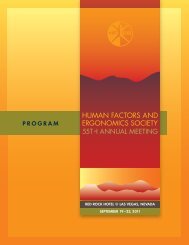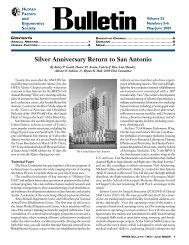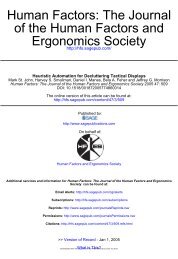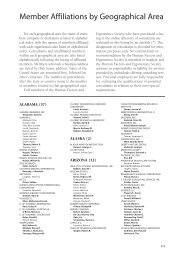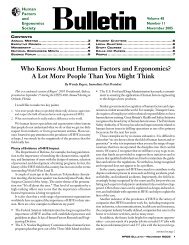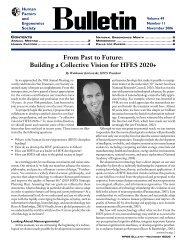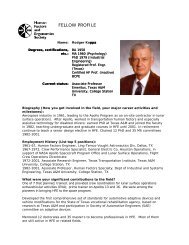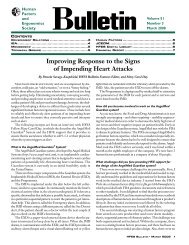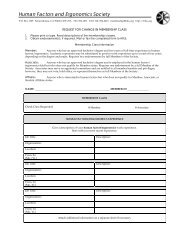Next Generation Air Transportation System Integrated Plan
Next Generation Air Transportation System Integrated Plan
Next Generation Air Transportation System Integrated Plan
You also want an ePaper? Increase the reach of your titles
YUMPU automatically turns print PDFs into web optimized ePapers that Google loves.
Ensure worldwide integrity of transportation security safeguards<br />
by actively promoting international cooperation.<br />
• Identify and standardize requirements for security, public<br />
health, and identification of passengers and cargo<br />
• Minimize health and security risks within the global<br />
transportation sector<br />
• Conduct on-going comprehensive vulnerability assessments<br />
• Assist other countries in achieving a minimum aviation security<br />
standard for flights arriving in or departing from U.S. airspace<br />
Cross-strategy Linkage<br />
This IPT will coordinate its work with the following IPTs to fulfill<br />
its mission:<br />
• Establish an Agile <strong>Air</strong> Traffic <strong>System</strong><br />
• Establish User-specific Situational Awareness<br />
• Harmonize Equipage and Operations Globally<br />
• Develop Environmental Protection that Allows Sustained<br />
Economic Growth<br />
• Establish a Comprehensive Proactive Safety Management<br />
Approach<br />
7.3 Establish an Agile <strong>Air</strong> Traffic <strong>System</strong><br />
Establish an agile air traffic system that accommodates future<br />
requirements and readily responds to shifts in demand from all<br />
users. The system will be responsive to market elasticity, have the<br />
flexibility to deliver capacity and efficiency improvements, and<br />
ensure that equipment and personnel are able to support a wide<br />
range and number of operations tailored to customer needs.<br />
Tie into Objectives<br />
• Accommodate future growth in demand<br />
• Increase the speed and predictability of air travel<br />
• Enable transparent military and space vehicle operation<br />
• Improve resilience to system perturbations, including those<br />
caused by weather conditions<br />
• Accommodate new types of vehicles<br />
IPT Mission<br />
• Develop a system capable of maximizing airspace and landing/<br />
departure capacities to efficiently and effectively satisfy marketdriven<br />
demands<br />
• Develop and deploy new technologies and establish policies<br />
and procedures that promote capacity growth and increased<br />
efficiency<br />
• Enable deployments to occur throughout the transformational<br />
process<br />
• Employ a right-sized approach, redefining roles and<br />
responsibilities to ensure a system that is affordable and<br />
scalable to varying levels of demand<br />
• Establish basis for seamless airspace allocation<br />
• Align resources for research, development, and deployment of<br />
transformational technologies, policies and procedures<br />
Transformation Direction<br />
• Transition to an end-to-end traffic flow management schema:<br />
- Control by exception<br />
- Distribute decision-making processes thus decreasing<br />
transaction burdens<br />
• Create a more optimal allocation of functions between<br />
automation and humans and between ground and air vehicles,<br />
to cost-effectively and safely deliver reliable and robust air traffic<br />
services<br />
• Transition to a system with less dependence on ground<br />
infrastructure and facilities that are more scalable to varying levels<br />
of user demand<br />
• Improve use of existing capacity and airspace:<br />
- Provide more routine operations in adverse weather<br />
conditions, achieving visual meteorological conditions<br />
operational performance in instrument meteorological<br />
conditions<br />
- Provide routine, reliable access to the airspace system by<br />
new vehicle types such as UAVs, microjets, and single-pilot<br />
aircraft<br />
- Provide strategic negotiation for priority uses that balance<br />
transportation benefits, equity of access, and national<br />
security requirements<br />
• Create global interoperable communications, navigation, and<br />
surveillance infrastructure that can function reliably within<br />
available spectrum<br />
• Achieve better context-relevant information formats and<br />
distribution methods for aircraft operators, air traffic service<br />
providers, airports, and transportation service users:<br />
- Provide 4-D flight path prediction<br />
Joint <strong>Plan</strong>ning & Development Office 27



